The 31-Degree Tilt: The Scientific Secret to Running in the Rain Without an Umbrella
I’m Kuwako Ken, your Science Trainer. Every day is an experiment.
Caught in a sudden downpour without an umbrella! Have you ever stopped to wonder what’s the best way to reach your destination while staying the driest? This is actually a classic physics question that has even appeared on university entrance exams! It remains a fascinating and popular problem discussed in various settings. So, what’s the real, practical answer? I appeared on the TV show “Chan House” (Fuji TV, 11:00 AM) on January 25, 2025, to give the scientific explanation.
I received the offer for this segment last year. The filming took place at the school where I work, and I provided the scientific commentary. The show introduces all kinds of trivia, and for this segment, I explained a complex scientific topic in a way that was easy to understand and a little bit fun.

Image cited from Fuji TV’s “Chan House,” broadcast on January 25, 2025. Source: “Chan House” (Fuji TV, broadcast on January 25, 2025)
Using the method I devised, we had Mr. Wadamaju run through a simulated rainstorm. I was very pleased to confirm that the technique was effective!

Source: “Chan House” (Fuji TV, broadcast on January 25, 2025)
This time, I’ll clearly explain the method and the physics behind it!
Let’s Model a Human as a “Rectangular Prism”!
Let’s dive right into the method, as we didn’t have time to cover the details on the program. For the sake of physics, we will model the human body as a “Rectangular Prism.”
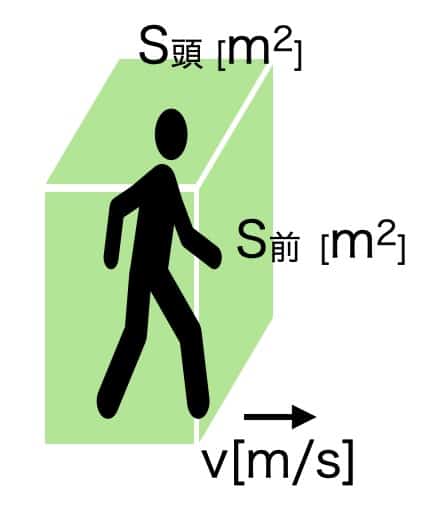
 Source: “Chan House” (Fuji TV, broadcast on January 25, 2025)
Source: “Chan House” (Fuji TV, broadcast on January 25, 2025)
“What?” you might ask. But simplifying the shape is a standard technique in physics to make the calculations manageable. Additionally, we assume that raindrops are distributed uniformly in the air, with a density of ρ (rho) drops per cubic meter. Now we’re all set!
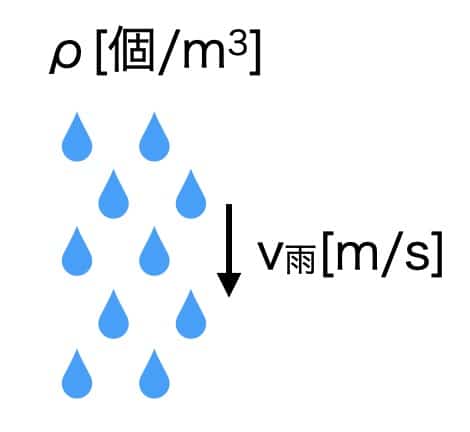
Calculating the Raindrops Hitting Your Front and Head!
Let’s start the calculation. We’ll denote the front body area as Sfront and the head area as Shead. If you move at a velocity of v [m/s], the number of raindrops hitting the front of your body per unit time (1 second) is calculated as follows:
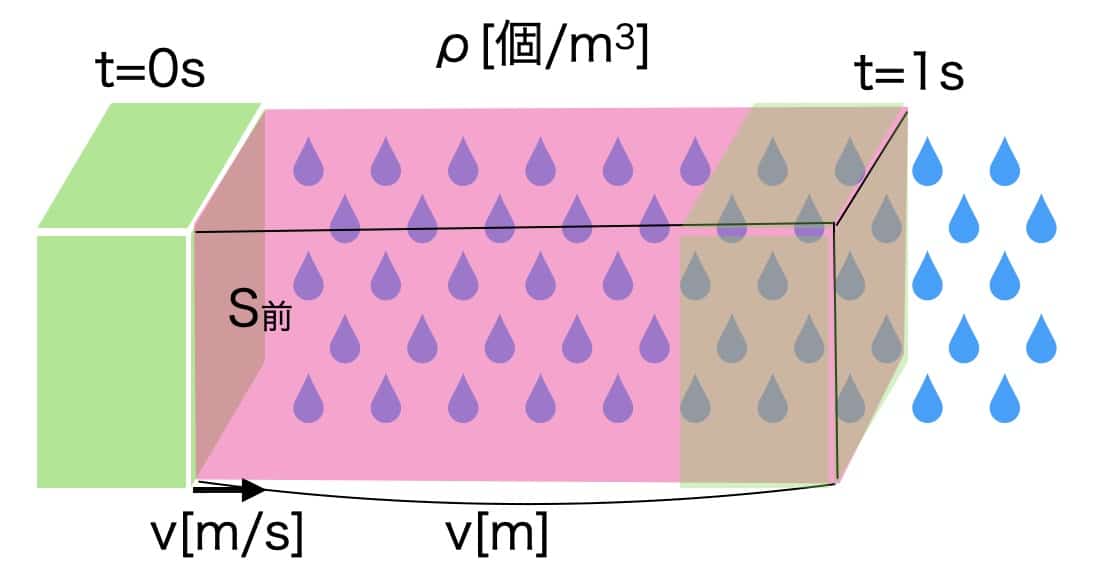
S前 × v × ρ [drops]
For the rain hitting your head, if we set the vertical falling speed of the rain downward as v
rain
[m/s], the number of drops hitting your head per second is:
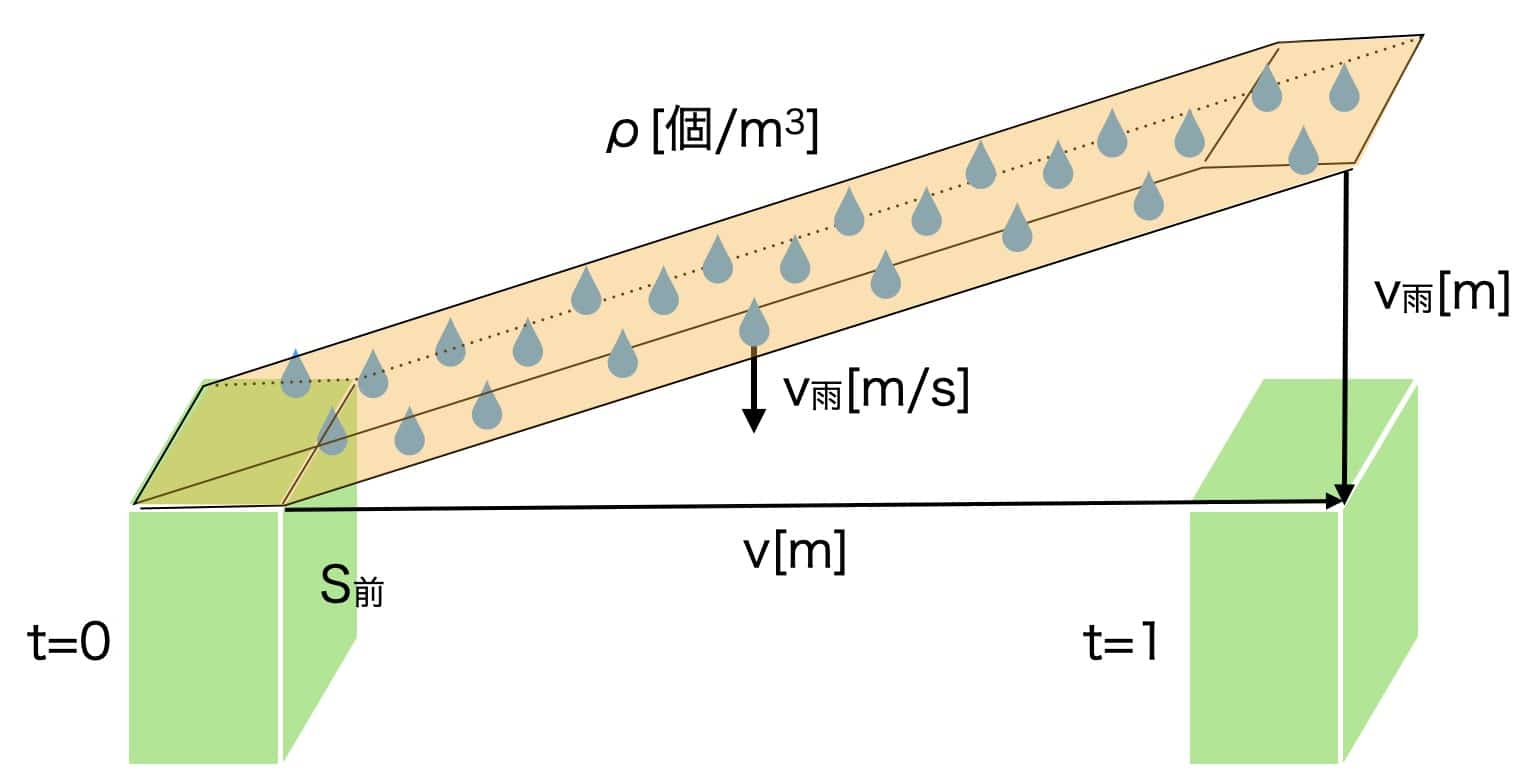
S頭 × v雨 × ρ [drops]
Total Raindrops Encountered Over a Fixed Distance
Therefore, if you move a distance x [m] over time t (where t=x/v), the total number of raindrops hitting you is given by the following equation:
(S前 v ρ+S頭 v雨 ρ)× t =(S前 v ρ+S頭 v雨 ρ)× x/v
=S前 ρ x + S頭 (v雨 / v)ρ x
Here are the key takeaways!
•The term S前 ρ x does not depend on your speed, v. This means the amount of rain hitting your front is the same whether you walk or run!
•The term S頭 (v雨 / v) ρx decreases as your speed v increases. This means the faster you run, the less rain hits you overall!
Extra Tips for Staying Drier
You can also try a few tricks to reduce how soaked you get:
1.Crab Walk (Moving sideways): By reducing your frontal area (Sfront), you decrease the number of raindrops hitting you from the front.
2.Low Posture Movement: Crouching down reduces your frontal area, minimizing the rain exposure.
Utilizing the Raindrop Velocity (The Leaning Angle Trick)
This approach uses a separate condition from the above: the speed at which the rain falls is also a vital factor. In our previous calculation, the rain hitting your front remained the same regardless of your speed (v) because we assumed a constant density. But in reality, when you move, the rain appears to come from an angle. By leaning your body to match that apparent angle, you can significantly reduce the amount of rain hitting your front.
Let’s do the math. The terminal velocity of raindrops (how fast they fall) is the key data here:
•Light Rain (radius 0.2mm): 1.6 m/s
•Normal Rain (radius 0.4mm): 3.3 m/s
•Heavy Rain (radius 1mm): 6.5 m/s
For instance, let’s take a case of heavy rain where the terminal velocity is 6.5 m/s, and a person is running at a speed of 4 m/s (or 14.4 km/h):
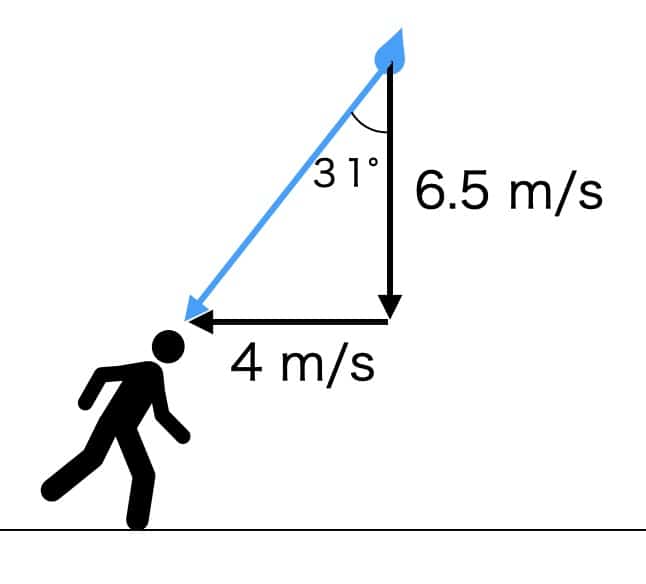
arctan(4 / 6.5) ≈ 0.55 rad, which is about 31 degrees.
By tilting your body at approximately 31 degrees, you can make the rain appear to fall straight onto your head, keeping your front perfectly aligned with the relative motion of the raindrops. With this little trick, you can significantly reduce how much your front gets wet!
Summary (The Dry-Run Strategy)
The conclusion is: Running is the best way to stay drier!
Moreover, you can minimize the soaking even further by using techniques like the crab walk, a low posture, or tilting your body.

Source: “Chan House” (Fuji TV, broadcast on January 25, 2025)
The final strategy proposed on the show was to “squat down, tilt the body about 30 degrees, and run as fast as you can.” We then had Mr. Wadamaju execute this exact strategy.

Source: “Chan House” (Fuji TV, broadcast on January 25, 2025)
The Difference Between Running and Walking

Walking resulted in a 150g increase, while running resulted in a 100g increase.
This clearly shows that running gets you less wet. It was a brilliant idea for the TV station to measure the amount of water absorbed by the resulting weight gain. Simply fantastic!
When Running While Crouching

50g increase
As expected from the theory, this strategy resulted in the minimum amount of soaking!
However, according to Mr. Wadamaju, there is one major drawback: “It’s absolutely exhausting.”
The next time you get caught in the rain, make science your ally and give this a try! Physics truly gives us practical advice for daily life. I’ll continue to share more “Aha!”-filled scientific topics in the future!
Listen to the Podcast here:
Contact and Requests
Let’s bring the wonders and fun of science closer to you! We’ve compiled fun at-home experiments and clear tips. Feel free to browse around!
・About the administrator, Kuwako Ken: click here
・For all requests (writing, lectures, experiment classes, TV supervision/appearances, etc.): click here
・Article updates are posted on X (Twitter)!
![]() We post experiment videos on the Science Topics Channel!
We post experiment videos on the Science Topics Channel!


